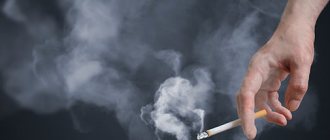The harmful effects of poor sleep
Lack of sleep is a problem that modern people often face. Lack of sleep leads to negative consequences for the body.
- Appetite increases and the person overeats.
- Concentration decreases: this is especially dangerous for those who drive a car.
- Appearance deteriorates: bruises appear under the eyes, skin fades faster.
- The immune system weakens, the body becomes vulnerable to seasonal diseases.
- Microdamage to the brain appears even after one sleepless night.
- The person becomes irritable and aggressive, his emotional reactions are inadequate.
- Sleeping for five hours increases the risk of stroke fourfold.
- The likelihood of developing cancer increases.
- There is a risk of diabetes mellitus.
- People with chronic insomnia are 48% more likely to die from a heart attack.
- In men, the number of sperm decreases and problems with potency are observed.
- The risk of premature death increases.
The risk of developing pathologies increases several times if a person sleeps less than six hours daily.
Depression and sleep
Depression (D) has many faces in its clinical manifestations, and along with affective, motor, autonomic, obligate, dyssomnia disorders are present, which makes the problem of sleep disorders one of the most pressing in this disease. The term “dyssomnic” reflects the diversity of these disorders, including both insomnic (85–90%) and hypersomnic (10–15%) manifestations. Statistics on the prevalence of sleep-wake cycle disorders in D ranges from 83% to 100%, which is determined by various methodological possibilities for their assessment; in polysomnographic studies this is always 100%.
This obligatory pattern of sleep-wake cycle disorders in D is based on common neurochemical processes. A special place in this regard is occupied by serotonin, disturbances in the mediation of which, on the one hand, play a crucial role in the genesis of D, and on the other, are of great importance in the organization of delta sleep and in the initiation of the rapid eye movement (REM) phase. This also applies to other biogenic amines, in particular norepinephrine and dopamine, the deficiency of which is important both in the development of depression and in the organization of the sleep-wake cycle. The state of the melatonergic system, which determines both the chronobiology of sleep and chronobiological disorders in D., is also important.
To date, there is no complete understanding of the characteristic features of sleep disorders in various forms of depression, although their great phenomenological diversity has long been pointed out. Sleep changes in endogenous depression are characterized by a reduction in delta sleep, a shortening of the latent period of the rapid eye movement (REM) phase, an increase in the density of rapid eye movements (REM) - one of the main phenomena characterizing FBS, and frequent awakenings. In psychogenic depression, the predominance of sleep disturbances with compensatory prolongation of morning sleep in the structure of insomnia is indicated, while in endogenous depression, frequent nighttime and final early awakenings are more often recorded. Patients D show a decrease in the depth of sleep, an increase in motor activity and frequent awakenings, a pronounced reduction in the 4th stage of sleep, against the background of which there is often an increase in the superficial (1st and 2nd) stages of the slow-wave sleep (SMS) phase. The number of transitions from stage to stage increases, which indicates instability in the functioning of the cerebral mechanisms for maintaining sleep stages. In addition, a characteristic feature was an increase in the number of awakenings in the last third of the night.
The phenomenon of “alpha-delta sleep” described in patients D indicates a significant change in the organization of the deepest stages of FMS. It is a combination of delta waves and high-amplitude alpha rhythm (lower in frequency by 1-2 vibrations than in wakefulness) and takes up to 1/5 of the total sleep time. In this case, the depth of sleep turns out to be greater than in stage 2, which is determined by a higher awakening threshold. It is believed that alpha activity in delta sleep is a reflection of the activity of activating cerebral systems, which do not allow somnogenic systems to fully perform their functions. Disruption of the regular distribution of delta activity, as well as a decrease in the amplitude of the delta rhythm and its power, indicate a relationship between the mechanisms of FMS and depression. The special relationship between D and delta sleep is also indicated by the fact that when leaving D, delta sleep is one of the first to be restored. Subsequently obtained facts showed, however, that delta sleep disturbances in depression are more typical for men and are not specific only to depression. Significant fluctuations in the duration of stage 4 sleep associated with age have been established, in particular its significant reduction in the period of maturity and especially in older people.
In depression, changes in the FBS are observed. According to various data, in patients with depression there is a significant variation in the duration of FBS - from 14% to 31%. The most important indicator reflecting the amount of need for FBS is its latent period (LP). The phenomenon of LA contraction in depression has long attracted the attention of researchers. A reduction in FBS latency was regarded by the authors as a sign of increased activity of the devices generating this phase of sleep, and was associated with an increased need for REM sleep. It has been shown that the more pronounced the depression, the more REM movements are collected into “packs”, between which there are long periods without any oculomotor activity. However, according to other data, there is simply an increase in REM density in the first sleep cycles. There are reports that the reduction of the FBS latency is not to the same extent characteristic of different types of depression - a short latency is characteristic only of all primary depressions and is absent in secondary ones. However, it is not determined in any way by other sleep parameters and does not depend on age and the effect of medications. Perhaps these data indicate desynchronization of circadian ri and their shift to an earlier time of day. It is also possible that the characteristic changes in sleep themselves play a role in the pathogenesis of D. Some authors emphasize the connection between the nature and severity of dreams with quantitative and qualitative changes in FBS in patients with D. However, it is quite possible that a decrease in FBS LP is secondary to to insufficient duration of delta sleep in the first sleep cycle, as mentioned earlier.
Since the discovery by Kupfer and Foster of the association of depression with a reduction in the interval between falling asleep and the first episode of FBS in comparison with healthy controls (
.), the relationship between mental disorders and sleep disorders is the subject of intense scientific research. In recent years, as a result of a large-scale meta-analysis, the following conclusions have been formulated. D is usually accompanied by a number of sleep disturbances in comparison with healthy control subjects: 1) an increase in sleep onset latency; 2)increasing the percentage share of FBS; 3) an increase in the density of the BDG; 4) deterioration in sleep continuity; 5) a decrease in the percentage of delta sleep and 6) a reduction in the latent period of FBS. Although the influence of age, gender, and severity of the depressive episode on sleep disturbances remains to be clarified, distinguishing depressed patients from healthy individuals based on sleep indicators does not present great difficulties. However, as shown in the aforementioned meta-analysis, none of the established sleep disorders can reliably differentiate depression from other mental disorders, such as panic disorder, generalized anxiety disorder, obsessive-compulsive disorder, schizophrenia, severe dementia or borderline personality disorder. Moreover, in polysomnography indicators it is not possible to identify clear differences between the subtypes of depression (primary, endogenous, atypical, etc.). Perhaps the most compelling differences concern the differentiation between psychotic and nonpsychotic depression. A few studies have attempted to take the opposite approach, i.e. group mental disorders or their subtypes based on biological markers, but the results do not support qualitative differences and common specific subtypes; only quantitative differences have been identified that support the concept of the “depressive spectrum.”
Several theories have been formulated to explain changes in sleep in untreated patients with major depressive disorder (MDD), the effects of medications on the sleep of such patients, and the effects of sleep manipulations, including total sleep deprivation or sleep deprivation.
There are a number of issues that are only partially resolved:
Are sleep disorders signs of a biological predisposition?
Do they reflect a depressive disorder and will they disappear after the clinical manifestations of a depressive episode are reduced?
Can effective antidepressants correct sleep disturbances found in untreated patients with MDD?
Can we assume that those sleep disorders that can be corrected in this way are primarily associated with depression?
Do drugs affect depression through sleep disturbances, or are the observed effects merely secondary effects?
Is it possible to predict in advance the effectiveness of this therapy 2 weeks after starting it?
Do they reflect the consequences of previous episodes?
Is it necessary to use sleeping pills or is it sufficient to use antidepressants to treat sleep disorders in patients with D?
The situation with neurotransmitters is no less complicated. For example, serotonin (5-hydroxytryptamine (5-HT)) is a major therapeutic target for depression and is important in sleep disorders. It would seem that selective serotonergic drugs can help clarify the relationship between these phenomena. However, the presence of several types of receptors (5-HT1A-D, 5-HT2A-C, 5-HT3 and 5-HT4), each of which has its own agonists and antagonists, not to mention their potential interactions with gamma-aminobutyric acid (GABA) ), norepinephrine (NA) or dopamine (DA), significantly complicates any scheme. Today, sleep research is an important part of the development of new psychotropic drugs, and almost every new drug is carefully studied for its effect on sleep.
Persistent insomnia is associated with a multiple-fold increased risk of developing MDD within 1–3 years, as well as an increased risk of recurrent depressive episode. Mood disorders have a high prevalence but often go unrecognized in people with chronic sleep disorders. Accordingly, today the development of optimal therapy for insomnia is becoming one of the most important health problems in industrialized countries. Because psychotropic medications can improve or impair sleep onset and sleep continuity, there is a need to consider insomnia in the development and selection of antidepressants. It is also known that antidepressants can provoke restless legs syndrome or periodic limb movements syndrome, which leads to worsening insomnia.
The effect of antidepressants on sleep
Monoamine oxidase inhibitors. Phenelzine, a monoamine oxidase inhibitor (MAOI), is able to almost completely suppress FBS after several weeks of therapy in both healthy individuals and patients with MDD. Other MAOIs, such as nialamide, pargylene, and mebanazine, have similar effects on sleep. This suppression of FBS coincides with the onset of the antidepressant effect, suggesting a physiological link between the suppression of FBS and the antidepressant effect. In most cases, MAOIs do not have a particularly pronounced effect on MBS, although these antidepressants are thought to reduce sleep efficiency.
The reversible MAOI moclobemide has polar effects: one study showed that its use increased sleep efficiency and shortened the latency period of FBS in patients with MDD; another study found almost completely the opposite results.
Tricyclic antidepressants . Tricyclic antidepressants (TCAs) differ from MAOIs in their ability to suppress FBS, since when using TCAs, suppression of FBS is observed immediately after the start of taking these drugs. Thus, clomipramine significantly suppresses FBS in control subjects. Imipramine and desipramine also have a significant suppressive effect on FBS, at least in healthy control subjects and animals. However, the effect of TCAs on FBS appears to be less consistent than the effect of MAOIs: long-term studies have documented normal and even elevated levels of FBS. One study in a group of patients with depression revealed an inhibitory effect of amitriptyline on FBS. After discontinuation of TCAs, the phenomenon of PBS rebound is often observed. It is interesting to note that not all TCAs have an inhibitory effect on FBS. For example, trimipramine, iprindole and viloxazine do not have a significant effect on FBS. As a group as a whole, TCAs increase the amount of delta sleep, with the exception of clomipramine. One study of clomipramine in a group of patients with MDD using spectral analysis showed a significant increase in delta waves corresponding to delta sleep. The use of desipramine in patients with MDD has been associated with difficulty falling asleep.
Tetracyclic antidepressants. Mianserin did not affect the duration of FBS in healthy control subjects and patients with MDD. Maprotiline suppresses FBS and increases the amount of stage 2 sleep in healthy control subjects. Both antidepressants can increase delta sleep rates.
Selective serotonin reuptake inhibitors . The selective serotonin reuptake inhibitor (SSRI) fluvoxamine suppresses FBS and increases latency in patients with MDD, but has no significant effect on delta sleep or delta waves as measured by spectral analysis. Paroxetine reduces total sleep time and reduces sleep efficiency in patients with MDD by decreasing FBS and increasing latency. In patients with MDD, the use of fluoxetine is accompanied by an increase in the frequency of awakenings, a decrease in sleep efficiency and a decrease in delta sleep, as well as an increase in the latency period and a reduction in FBS. Treatment of patients with MDD with sertraline is associated with an increase in sleep latency and a reduction in the duration of FBS. Citalopram persistently suppresses FBS, which is combined with the phenomenon of FBS rebound after drug withdrawal. According to spectral analysis, citalopram has no effect on delta waves. Trazodone at a dose of 100–150 mg/day suppresses FBS and increases delta sleep, and also improves subjective ratings of sleep quality, as shown in a group of middle-aged patients with insomnia. In high doses (400–600 mg/day), treatment with trazodone in patients with MDD is accompanied by an increase in total sleep time and delta sleep, but without significant changes in FBS and its latency. Nefazodone reduces arousals and increases sleep efficiency, and stabilizes or even increases FBS time in healthy subjects and patients with MDD; At the same time, a reduction in delta sleep was noted. SSRIs may cause periodic limb movement syndrome.
Serotonin and norepinephrine reuptake inhibitors. The serotonin norepinephrine reuptake inhibitor (SNRI) venlafaxine increases wake time and stages 1, 2, and 3 sleep in healthy subjects. There is a pronounced suppression of FBS and an increase in its latent period.
The noradrenergic and specific serotonergic antidepressant (NASSA) mirtazapine improves sleep in healthy subjects. Mirtazapine reduces the time it takes to fall asleep and increases the depth of sleep. There is also an increase in the latent period of FBS and a reduction in night awakenings. In patients with MDD, the use of mirtazapine improves sleep efficiency and increases total sleep time, while no effect on FBS was detected.
Other antidepressants . A study in young healthy subjects found no evidence of an effect of tianeptine at therapeutic doses (37.5 mg/day) on electroencephalographic (EEG) sleep parameters. Tianeptine has been shown to suppress FBS in healthy subjects and patients with comorbid depression and alcoholism. The same study showed improvement in sleep with tianeptine, as assessed by the Leeds Sleep Questionnaire.
Melatonin and melatonergic antidepressants . Almost all studies have identified certain hypnotic effects of melatonin and, first of all, acceleration of falling asleep. Regarding the antidepressant capabilities of melatonin, there are directly opposite points of view - from complete denial to confident confirmation. Without going into controversy, we emphasize that this new knowledge contributed to the creation of an absolutely new antidepressant in ideology and neurochemistry - agomelatine, which is an agonist of cerebral melatonin receptors of the 1st and 2nd subtypes (primarily in the suprachiasmatic nucleus) and an antagonist of 5-HT2C serotonin receptors. The uniqueness of this antidepressant lies in the fact that its hypnotic effect is not associated with the effect of sedation and occurs already on the 14th day. Of course, like any new pharmacological product, it requires further research, but theoretically its combined antidepressant and hypnotic effects seem to be very significant.
Possibility of using polysomnography to predict the effectiveness of antidepressants
By now, the significance of several such predictors can be debated.
- A short latency period of FBS before the start of therapy (baseline characteristic) correlates with a positive effect.
- For future responders, spectral analysis of electroencephalography (EEG) is characterized by high power of delta waves and low power of alpha, beta and theta waves throughout the night before the start of therapy.
- High REM density before therapy is associated with a poor prognosis, so it is important how quickly REM activity is suppressed during the initial period of therapy. Suppression of REM in the first two nights after starting TCAs has been shown to be associated with a high therapeutic effect. These data have not been confirmed in studies of SSRIs.
Despite their clear value, such prognostic strategies are rarely used in clinical practice.
Conclusion
A number of arguments have been put forward to support the hypothesis of a close connection between sleep dysregulation and the basic factors of depressive disorders:
- almost all patients suffer from sleep disorders (insomnia or hypersomnia);
- patients with chronic insomnia as a monosymptom are characterized by an increased risk of manifestation or relapse of depression;
- For the most part, pharmacological drugs effective for depression affect sleep, usually correcting the initial sleep disturbances in patients;
- Sleep deprivation is an effective therapy that provides relief from depressive symptoms in 50% of cases, although this effect is short-lived.
Most antidepressants suppress FBS quite quickly (TCAs, SSRIs, SNRIs and HASSA) or approximately 2 weeks (MAOIs) after initiation of therapy. However, there are a number of exceptions (trimipramine, iprindole, tianeptine, viloxazine, nefazodone). Sleep depth may increase (agomelatine, trazodone, nefazodone, mirtazapine), remain unchanged (most MAOIs, fluvoxamine), or decrease (clomipramine, desipramine, phenelzine, fluoxetine, paroxetine, sertraline, venlafaxine). The effects of long-term use of antidepressants are, in principle, poorly studied, although a tendency towards a gradual reduction of the initial effects has been found.
Here are some theories that help explain some facts.
The first theory is based on Borbely's general model of sleep regulation, in which the "S" process represents the delta wave EEG of sleep corresponding to deep sleep (roughly corresponding to stages 3 and 4 in hypnograms for visual assessment). One hypothesis is that depression leads to a decrease in slow wave sleep (SWS) or delta wave spectral power, which in turn frees up space for REM and stimulates a more rapid onset of REM at night with increased REM and decreased latency. One approach to confirm this hypothesis involves measuring the sleep EEG spectral power response in response to antidepressant therapy. A study using spectral analysis was performed in which a comparative assessment of the effects of trazodone and citalopram in patients with MDD was carried out. The aim of the study was to look for parallels between potential changes and timing of clinical improvement. This study shows that delta waves do not change significantly during the first 5 weeks of therapy, and the timing of changes in other waveforms does not correlate with clinical changes in patients' condition. Moreover, antidepressants varied significantly in their effect on sleep continuity, ranging from worse to better. Accordingly, the role of MVS restoration remains unclear.
The second theory is FBS pressure. It has been shown that almost all drugs that cause a pronounced and persistent reduction in the time of FBS and are characterized by the phenomenon of rebound of FBS after their withdrawal are effective means of treating endogenous depression. Antidepressant therapy, as well as sleep deprivation (partial, FBS-specific or complete), electroconvulsive therapy or psychotherapy act in parallel with the improvement or through the correction of pathological sleep disorders in patients with depression. It has been established that during depression, LP decreases and, regardless of the mechanism underlying this phenomenon, it must be increased; the percentage of FBS, on the contrary, increases with depression, so it should be reduced. However, it is obvious that the general rule for an effective antidepressant—reduction of FBS and increase in LP—has many exceptions. Therefore, it can be assumed that either more than one mechanism is involved and only some antidepressants are consistent with this rule, or changes in sleep parameters during antidepressant therapy are only indirectly related to their effectiveness against depression.
Although it is likely that sleep and its underlying neurophysiological mechanisms are closely related to the mechanisms of depression, these disorders do not appear to be identical, and we cannot argue that successful treatment of depression necessarily requires correction of sleep disturbances. At the same time, sleep cannot be considered as simply a concomitant phenomenon; this is contradicted by the frequent association of depression with sleep disturbances, changes in sleep structure, and modifications in sleep parameters during antidepressant therapy. However, sleep disturbances may not be a necessary component in the development of depression.
Thus, disturbances of the sleep-wake cycle in depression are diverse and include insomnia and hypersomnia. The “purer” the depression, the more likely it is to identify fairly characteristic changes in the structure of night sleep. Of great interest are not only the antidepressant effects, but also some non-pharmacological techniques that act on the depressive radical - sleep deprivation and phototherapy, which have proven to be quite effective and safe. The discovery of the commonality of some biochemical mechanisms of depression, sleep disorders and circadian rhythms further increases interest in this problem, especially since this opens up the possibility of new integrated approaches to the treatment of sleep disorders in depression.
Ya. I. Levin , Doctor of Medical Sciences, Professor of MMA named after. I. M. Sechenova, Moscow
What affects sleep quality
To be productive and feel good, a person must get a good night's sleep. To ensure sound sleep, you need to take into account several factors that influence its quality.
- You should not use gadgets before bed. It is not recommended to browse your social media feed from your smartphone or get carried away with watching TV series. You should also not watch TV at night.
- Taking certain medications can cause insomnia. If you cannot refuse them, then you should ask the doctor to prescribe a similar remedy.
- Coffee and tea tone the body and cause problems with falling asleep.
- It is recommended to eat three hours before bedtime so that the gastrointestinal tract has time to cope with food.
- Before going to bed, the room needs to be ventilated. The best temperature for falling asleep is 16-20°C.
- Before going to bed, you should not take a contrast shower.
- The decor in the bedroom is an important factor. The light should not be too bright; it is recommended to maintain silence.
You shouldn't laugh or quarrel a lot before going to bed. In a state of emotional arousal, a person will not be able to sleep.
Insomnia and its features
Sleep helps a person relieve muscle and emotional tension, restore energy, and also prepares the body's organs and systems for functioning. Most people need 7 to 9 hours to get enough sleep and feel good. Insomnia, or insomnia, can cause disturbances in this process at different stages. So, some people cannot sleep, others often wake up during the night, and for others, sleep is interrupted earlier than planned, and the person can no longer doze off.
Insomnia is classified into several types: transient and chronic. The first is characterized by the fact that insomnia manifests itself in a person for one to two weeks, after which it passes without the need for any external influence. The second type of insomnia can torment the patient from one month to several years. Chronic type of insomnia is quite common and requires mandatory treatment with medications or home remedies.
Causes
Various factors can lead to sleep disorders. Many of them are present in the lives of most people, but do not cause insomnia. Therefore, they cannot be called direct causes of the development of the disease. However, most often they lead to the problem.
Main reasons:
- Exposure to the external environment (temperature conditions, bright light, loud noise);
- Mental disorders (depression, anxiety, neurosis, fear);
- VSD and other nervous system disorders;
- Chronic diseases of internal organs;
- Overeating in the evening;
- Abuse of coffee or energy drinks;
- Drinking alcoholic beverages, binge drinking;
- Failure of sleep patterns (night shifts at work, moving with a change in time zone);
- Old age, aging of the body, urinary incontinence;
- Taking certain medications;
- Third trimester of pregnancy (big belly, back pain, pushing of the fetus);
- Hormonal changes (puberty, menopause);
- Discomfort in the chest when the mother begins to breastfeed.
If you can determine the exact cause of the development of insomnia, then it will be much easier to recover, because By eliminating the root cause, you will be able to get rid of the risk of recurrence of sleep disorders.
Symptoms
There are no special signs of insomnia. The main symptoms are limited only to lack of sleep and sleep disturbances, which can be expressed by the inability to fall asleep, frequent awakenings or early rise. Additional symptoms may include:
- Decreased performance;
- Low concentration, inattentiveness;
- Daytime sleepiness;
- Bad mood, irritability, depression.
Often, if a person does not know how to cope with insomnia on his own and does not take any action, then complications begin to develop. These may include: poor immunity, weakness, metabolic disorders, nervous exhaustion, abnormal heart rhythm and blood pressure. In some cases, temporary respiratory arrest may occur at night.
How to improve an adult's sleep
You can achieve sound sleep on your own – you don’t need to take special medications or visit a doctor. Six techniques for improving your sleep and sleep will help you not only feel energized every morning, but also improve your daily routine.
Normalize your own sleep
Proper sleep patterns are important for good physical and mental health. Every day you need to wake up and fall asleep at the same time in order to establish a sleep pattern and observe the phases of rapid and deep sleep. It is important for adults and children to program their biological clocks in order to fall asleep normally and wake up refreshed in the morning.
For adults, 7-9 hours of good sleep is enough to maintain a healthy body. This indicator is individual: you can only understand how much a person needs through experience.
Nutrition
Before going to bed, doctors recommend avoiding heavy foods and sweets. A light dinner or snack three hours before bedtime will improve your metabolism and reduce the time it takes to fall asleep. Natural yogurt without sugar, half a banana, a boiled egg, milk with honey is a good alternative to a heavy meal.
Attention! You can drink tea and coffee 6-8 hours before bedtime.
You should not eat chocolate and sweets at night. They contribute to excess weight gain and prevent you from falling asleep.
Quality of bed
The bed or sofa on which a person sleeps should be comfortable. It is better to choose an orthopedic mattress: it adapts well to the anatomical features of the human body and maintains posture in the correct position. Linen should be made from natural hypoallergenic fabrics.
Energy shower
The practice of energy shower according to Osho is one of the ways to get rid of negative thoughts, calm emotions and prepare for sleep. While taking a regular evening shower, you need to imagine that a pure waterfall of energy is pouring onto a person. Breathe deeply, rhythmically, absorbing valuable particles into yourself.
You need to imagine how wonderful the next day will be. Visualize that you managed to get what you have been striving for for so long, that success has already come. You need to feel strong and energetic, capable of overcoming all obstacles. Standing under streams of water, you need to imagine that all the negativity goes down the drain, leaving the body clean to be charged with positive energy.
An energy shower gives you peace and self-confidence.
Meditation
Meditation is a good way to calm your emotions and prepare for a night's rest. Breathing tactics are among the most effective. They involve concentrating on alternating inhalations and exhalations and peace.
First you need to take a comfortable position - sit in the lotus position or just sit on the sofa. Close your eyes and start breathing at a comfortable rhythm. You only need to think about breathing, which will reflect the emotional background of a person. It is not recommended to specially adjust it - this will not result in a therapeutic effect.
If you can’t suppress negative thoughts, you can count your inhalations and exhalations. To do this, you need to count your breaths from 1 to 5, then start over again. It is recommended to meditate regularly: start from 5 minutes a day and work up to 15.
In the Christian tradition, it is customary to pray before going to bed. This is also a kind of meditative tactic: prayer calms emotions and helps you fall asleep faster.
Physical exercise
It is not recommended to actively engage in sports before going to bed - it will be almost impossible to fall asleep afterwards. It is better to limit yourself to stretching, yoga and other practices that do not involve strength training. Such activities will bring pleasant fatigue and distract you from negative thoughts.
Drugs that improve sleep
If you are unable to normalize your sleep on your own, you can try taking special medications. They contain plant extracts that have a sedative effect. Among them:
- valerian tablets, motherwort;
- Persen-Forte;
- Novo-Passit;
- Fito-Sedan;
- Corvalol;
- Donormil
Attention! Only a doctor can prescribe sedatives after examining the patient.
The sofa is the enemy of man
“The cause of poor sleep and even nightmares can be an uncomfortable sleeping place,” states Elina Iakofidi, leading manager of the Latrix brand of orthopedic mattresses. “In this case, the problem can be fixed simply by choosing a comfortable mattress and pillow.”
The mattress parameters should be selected depending on your general health, body weight and personal preferences. One of the most comfortable options for sleeping is memory foam material.
But sofas are not the best option. But if there is no alternative, for a healthy sleep on the sofa you should buy a topper. This is the name for small mattresses of varying hardness with a height of 4 to 7 centimeters. They hide the joints on the sofa and make the sleeping area more comfortable.
If in some sofas like the American folding bed the topper is included by default, then for a book sofa you need to choose it yourself. As a rule, toppers in folding beds come with foam filling, which dries out over time, crumbles and can break when the sofa is folded repeatedly. Preference should be given to latex filler.
Folk remedies
Traditional medicine offers several remedies for the treatment of insomnia.
Viburnum decoction
Viburnum is a berry with specific flavor and aromatic properties, which has a wide range of beneficial properties. A decoction based on it helps you fall asleep faster and strengthens the immune system. To prepare you need to take:
- 1 tablespoon of viburnum berries;
- 1 tablespoon of natural honey;
- 200 ml of pure still water.
Pour water over the berries, put on the stove, and bring to a boil. Boil for a couple of minutes, turn off the heat. Let the broth cool slightly, strain through a sieve. Add honey to the finished drink and stir well. It is recommended to drink this drink before bed.
Honey with milk
Warm milk with honey is a classic recipe that helps you fall asleep faster and have a good night's sleep. It's easy to prepare a healthy drink. You need to heat a glass of milk to a temperature of no more than 50°C; it should be moderately warm, but in no case hot. Add a teaspoon of honey, stir well. Drink a milkshake before bed.
Important! It is prohibited to put honey in hot liquid. It loses its beneficial properties and becomes harmful to the body.
Dill broth
A decoction of dill is an effective folk remedy that helps you fall asleep quickly and soundly. It's easy to prepare. Take a teaspoon of dill seeds and pour a glass of boiling water. Cover with a lid and let steep for an hour. Strain the finished infusion, cool, and drink an hour before bedtime.
Recommendations from somnologists
Recommendations from somnologists on how to improve deep sleep will help you feel refreshed every morning and improve your daily routine.
- You need to go to bed with calm thoughts. It is important to relax and take your mind off your problems.
- Try to go to bed at the same time. If you can’t fall asleep right away, you don’t need to be nervous and reproach yourself for it. It’s worth going into another room and reading a boring book.
- Counting sheep is a bad idea. Instead, you can concentrate on your breathing, counting your inhalations and exhalations.
- Do a relaxation exercise. Lying on your back, bend and straighten your feet 40-50 times.
- When you wake up in the morning, you need to immediately get up in bed. The habit of lying down after sleep kills further productivity.
- Ventilate the room before going to bed, while doing breathing exercises. You only need to breathe deeply through your nose, observing the rhythm. There is no hurry.
- Daytime sleep is the enemy of night rest. It is better to refuse it.
Healthy sleep allows you to achieve longevity and good mood. A good night's rest improves your well-being, restores your body, and gives you a boost of energy.
Homeopathy for treatment
Drug therapy for nervous insomnia is prescribed only in particularly severe cases. Most often they resort to homeopathic medicines made from natural, environmentally friendly ingredients. They do not have a negative effect on the human body and have a minimum of contraindications. Such products are suitable for both adults and children.
Let's consider what will help get rid of excessive excitability of the nervous system and normalize sleep:
- "Sonylux". A completely natural product containing natural substances. It is indicated for the treatment of stress, neuroses and insomnia, and has no contraindications except for personal intolerance to the components. "Sonylux" has a mild effect on the nervous system, it does not cause addiction or side effects, which has been proven in clinical studies. Active ingredients of the drug:
- Alishan gaba is a herbal component that was discovered by Japanese professor Tsushida in 1987; it is the No. 1 remedy in the fight against anxiety and depression, and also normalizes memory and sleep.
- The lofant plant is a powerful long-acting immunostimulant, reduces blood pressure and prevents aging, and gently eliminates excessive excitability of the nervous system.
- Beaver stream - has bactericidal and healing properties, is used to treat cardiovascular and nervous diseases, eliminates migraines and acts as an antispasmodic.
- A collection of 32 medicinal herbs - relaxes the entire body in general and the nervous system in particular, helps cope with stress and neuroses, stabilizes blood pressure and heart rate.
The drug helps you fall asleep quickly and easily. It has been proven that the duration of the slow-wave sleep phase returns to normal when used, this will provide you with a good night's rest.
Also, regular use of the product will help get rid of chronic fatigue, eliminate anxiety and aggression, and protect against nervous tension.
- DreamZzz. Used for sleep disorders and psycho-emotional lability. A biogenic natural remedy is made on the basis of plant components that are used to eliminate depression and anxiety, help increase the body's protective functions, calm and protect the nervous system from overstrain, fight the symptoms of migraines, cardiovascular diseases, and improve mood and vitality. A healing collection of 32 herbs helps to completely relax, restores normal sleep, stabilizes heart rate, and copes with neuroses and anxiety. Using the medicine will give you the following results:
- acceleration of falling asleep and restoration of serene sound sleep;
- getting rid of feelings of anxiety and aggression;
- elimination of chronic fatigue;
- protection against nervous tension;
- good and cheerful mood.
The effect occurs within a few days after regular use of the product. However, to completely get rid of the manifestations of neurosis and insomnia, you need to complete the full course. The drug must be taken according to the instructions; it is suitable for adults and children over 2 years of age.










